Do you want to learn how to become an Amazon affiliate?
Joining the Amazon Associates program may seem like a daunting process, but it’s actually pretty straightforward.
Plus, affiliate marketing is one of the most effective ways to generate revenue from products you already promote in your content.
In this post, we cover how to become an Amazon affiliate. We also share a few tips on earning your first commission from Amazon affiliate links.
How to become an Amazon affiliate
Here’s a quick summary of the steps involved:
- Visit the Amazon Associates program page, and click Sign Up.
- Log into your Amazon account, or create a new one.
- Enter your payee’s name and physical address.
- Add the websites and apps you’ll use to promote Amazon affiliate links.
- Fill in the Profile section of the Amazon Associates program application.
- Complete your Traffic & Monetization profile.
- Generate three qualified sales within your first 180 days as a member of the Amazon affiliate program to complete your application.
Now, I’ll walk you through each step in more detail:
Step 1: Visit the Amazon Associates page
Go to the Amazon Associates Central page, and click the yellow Sign Up button.
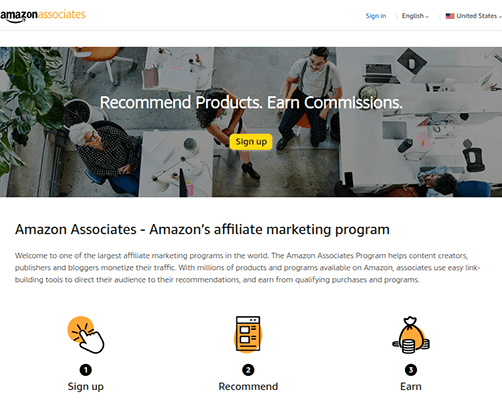
Step 2: Log into Amazon.com
Log into your Amazon account, or create a new one.
You can use your personal account to join the Amazon Associates program, but consider creating a second account instead. This will allow you to keep your buyer and affiliate activity separate on the platform.
Just as a heads up, you’ll need to use a separate email address and phone number than the ones associated with your personal buyer account.
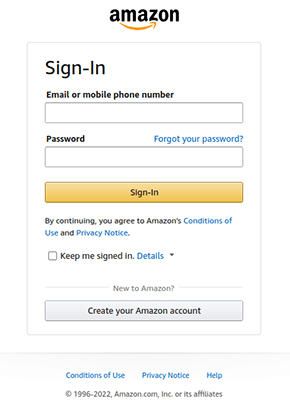
Step 3: Configure your account information
Enter the personal details of the individual who will be receiving payments from the Amazon Associates program.
If you’re using a personal account, your information should already be selected.
Otherwise, select “Someone else” under “Who is the main contact for this account?” Then, provide a name and phone number.
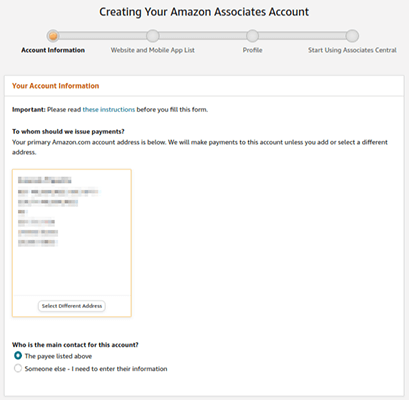
Click Next.
Step 4: Add websites and apps
Add the websites you’ll use to promote Amazon affiliate links to the left box and the apps you’ll use to the right box.
Put one website or app per line, and include “https://” or “http://”.
Social media pages count as websites.
Only apps from Amazon, Google and Apple URLs are accepted in the Mobile Apps list.
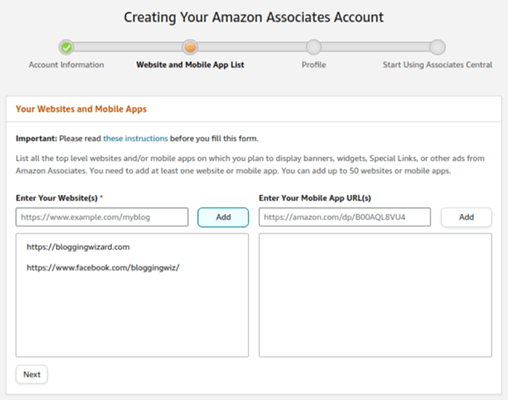
Click Confirm to continue.
Step 5: Complete your content profile
Enter your preferred store ID for the Amazon affiliate program in the Associates Store ID field.
Use something short and descriptive, such as your first name, brand name or abbreviated name.
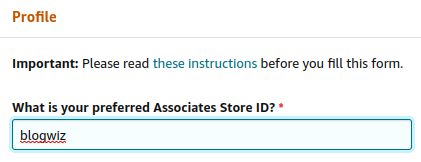
This ID will appear in each affiliate link. It’s what the Amazon affiliate program will use to identify your referrals.
Next, fill in the textbox labeled “What are your websites or mobile apps about?”
All you need to do is enter a brief description about the content you create, your target audience and the types of products you promote to them.
Example: “Fashion advice for young women. Products include clothing, shoes, accessories and beauty products.”
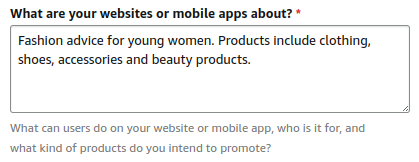
Next, categorize your website or app with primary and secondary topics.
Be as descriptive as possible. If you can’t find a category that accurately represents your content, choose “Other.”
You should also get more specific with the next question by selecting the specific types of products you plan to create Amazon affiliate links for.
You can select more than one.
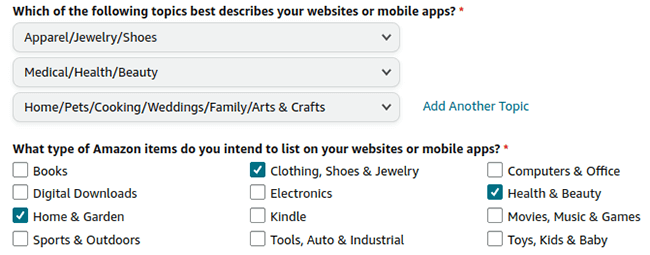
Lastly, choose primary and secondary types for the content you create on your website. Your options are blog, comparison website, niche website, coupon site or search.

Step 6: Complete your traffic & monetization profile for Amazon Associates
For the first question, choose all the ways in which your site receives traffic.
You can select more than one method.

Next, choose the methods you use to generate revenue for your site.

Finally, answer the four remaining questions in the traffic and monetization section of the Amazon Associates application.
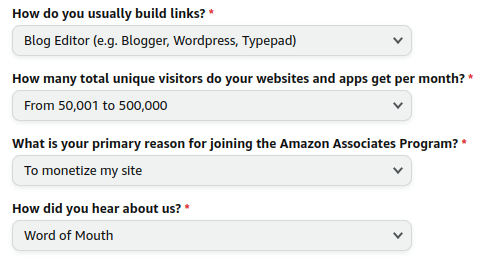
Complete the captcha test to finish your Amazon affiliate application.
Step 7: Generate three qualified sales
Amazon doesn’t review your application right away. You must generate three qualified sales as an Amazon affiliate first, and you must do this within 180 days.
Your application will be withdrawn if you fail to generate sales within this timeframe.
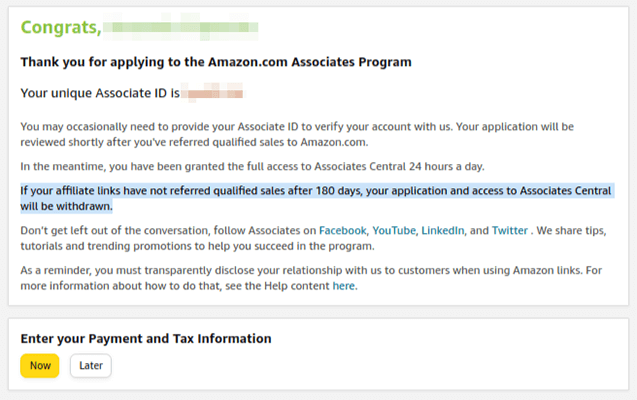
Finally, provide your tax information. You can do this later, but you won’t receive payouts until you do, so it’s best to do it as soon as possible.
How to earn commissions as an Amazon Affiliate
Now that you’re a member of Amazon’s affiliate program, it’s time to start earning.
Start by choosing the exact products you’d like to promote, then create affiliate links for them.
Next, decide the ways in which you want to showcase links on your site. Then, use a few different strategies to promote each affiliate link.
Let’s go over each step.
How to choose Amazon products to promote
Here are two easy ways to determine which products to promote from Amazon:
- Products you actually use and love.
- Top-rated products in your niche.
Go through your order history in search of products related to your niche. Try to remember your experience with them, and pick the best ones.
Otherwise, input a keyword related to your niche, then use Amazon’s filter options to pinpoint top-rated products.
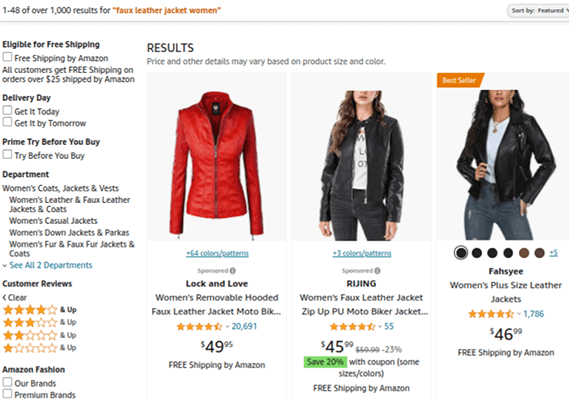
The reason why you want to promote top-rated products is simple: social proof.
Products you love or your target market loves have proven track records. You know they sell well and are rated high enough to likely have low return rates.
You can also use the Idea Hub within the Amazon Associates dashboard. It’s a simple way to find the latest deals being offered by Amazon.
The tool even has filter options you can use to find deals in your niche.
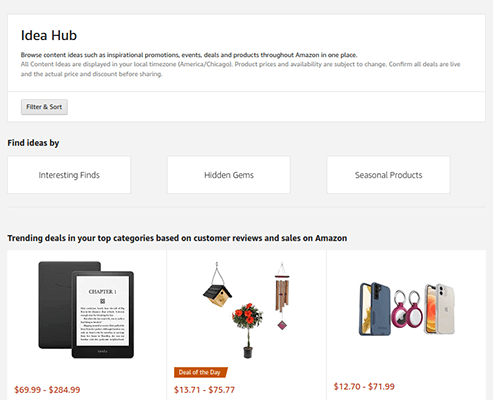
Keep in mind that not all product categories are created equal as far as commission rates go in the Amazon Associates program. Clothing products will get you a 4% commission rate whereas beauty products have a 3% rate.
Visit Amazon Associates’ help docs to see the full list of commission rates the Amazon affiliate program offers. It’ll help you decide which products to focus on.
How to create an Amazon affiliate link
There are a few different ways you can create affiliate links for the products you want to promote.
The easiest way is with Amazon’s SiteStripe tool.
Browse Amazon while logged into your Amazon Associates account. Then, click on a product you want to promote.
You should have noticed the SiteStripe bar located at the top of the web page by now. It generates different affiliate link types for you:
- Text – A simple URL you can attribute to text or buttons on your website.
- Image – HTML embed code you can paste on a web page to display a product image. Your affiliate link is attributed to the image’s link. There are three image sizes to choose from.
- Text + Image – HTML embed code. It generates a display box that includes a product image, title, price and call to action for your affiliate link.
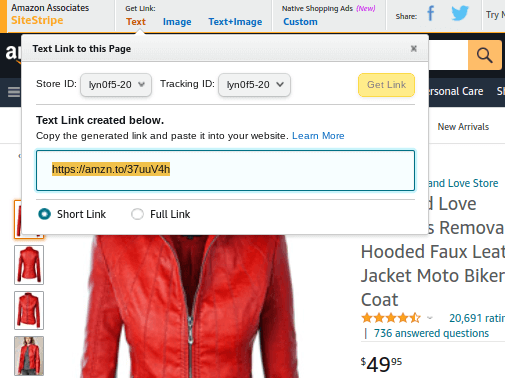
When you create a text link, you have two options to choose from: short link or full link.
Amazon uses its own link shortener that converts long Amazon links into a amzn.to URL.
This is important as the Amazon affiliate program does not allow you to use link shorteners like Bitly or cloak links with tools like ThirstyAffiliates. Doing so can get you kicked out of the program if you’re caught.
Unfortunately, Amazon’s short link does not contain your affiliate ID. This makes shortened links unsuitable for long-term use as they can’t be edited.
To make things simple, use short links for short-term promotions on social media, in emails and podcast episodes.
Use full links for blog posts, high-ranking web pages and YouTube videos.
Moving on with SiteStripe, you can also quickly share affiliate products on social media with the bar’s quick-share buttons for Facebook and Twitter.
Lastly, SiteStripe can generate ad code for you. This code lets you showcase Amazon ads on your site to promote relevant and dynamic products to your audience.
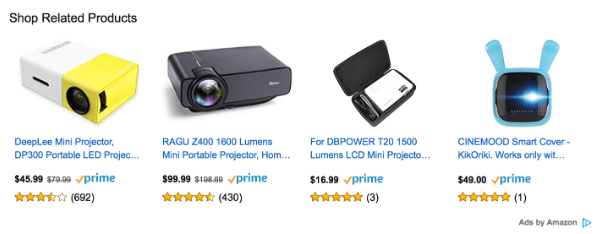
Other ways to create Amazon affiliate links
The Amazon Associates Central dashboard has a few extra tools you can use to generate affiliate links:
- Link to Favorite Destinations – Generate an affiliate link that leads to a specific subcategory, such as “hair products.”
- Link to Search Results – Link to results for a specific keyword, such as “wooden hairbrushes.”
- Link to Any Page – Create a link for any Amazon.com URL.
- Banner Links – Create banner calls to action for specific product categories.
- Mobile Popover – Generates JavaScript (JS) code that enhances affiliate links by creating non-intrusive ads that float at the bottom of web pages on mobile devices.
Each tool is easy to use.
For the first three links, navigate to Product Linking → Link to Any Page. Each link type has its own tab.
All you need to do is select the categories or URL you want to link to, name your link, and generate your HTML code.
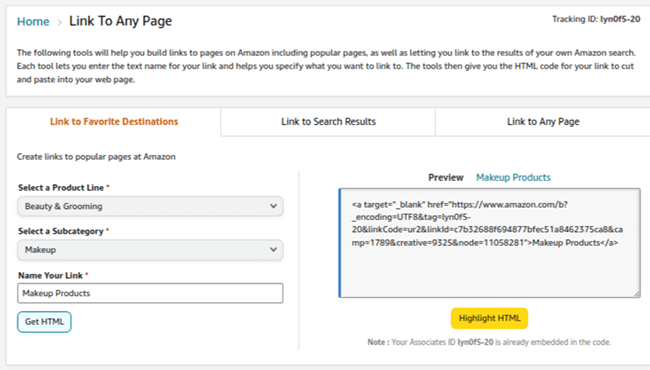
For banner links, go to Product Linking → Banners. Then, select the product category you want to promote.
Amazon has 10 banner sizes to choose from. All you need to do is copy and paste the HTML or JS code it generates into wherever you display ads on your site.
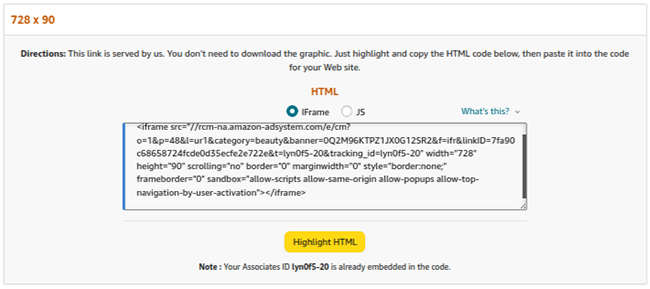
The code for mobile popovers can be found at Product Linking → Mobile Popover.
Add it to your website. A popover ad will appear anytime someone on a mobile device scrolls over an Amazon affiliate link on your site.
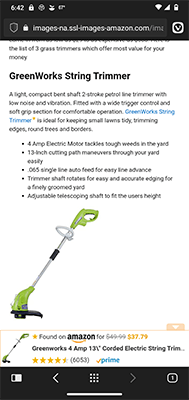
You can also use Amazon’s OneLink tool found at Tools → OneLink.
OneLink enables you to link your US Amazon Associates account with international accounts. Specifically, you can link your account to Amazon’s regional stores in Canada, United Kingdom, France, Italy and Germany.
Amazon uses geotargeting. When a reader from the UK clicks an affiliate link on your site, they’ll be taken to Amazon.co.uk rather than Amazon.com.
Without OneLink, you won’t receive commissions for purchases your readers make in Amazon’s international stores.
It takes a few steps to set up, but it’s a pretty straightforward process.
5 Amazon affiliate tools to know about
- Geniuslink
- Amazon Affiliate WordPress Plugin (AAWP)
- Kit
- Jungle Scout
- WordPress Review Plugins
1. Geniuslink
Geniuslink is one of the most popular affiliate marketing tools out there. It’s used by thousands of Amazon associates.
It enables you to create smart affiliate links for multiple retailers, including Amazon, iTunes, Walmart, Best Buy and more.
Before OneLink, Geniuslink was the way to ensure you receive commissions from international Amazon purchases.
It still does this, but it’s a much more powerful tool these days.
One of its most useful features is the way it ensures you earn a commission even if your reader doesn’t buy the specific product you linked to.
2. Amazon Affiliate WordPress Plugin (AAWP)
Amazon Affiliate WordPress Plugin, better known as AAWP, is an affiliate marketing plugin that lets you create display boxes in multiple styles in WordPress.
Here are some of the display boxes you can create for Amazon affiliate links:
- Comparison table
- Product box
- Bestsellers list
- New releases list
- Data table
- Multiple widget formats
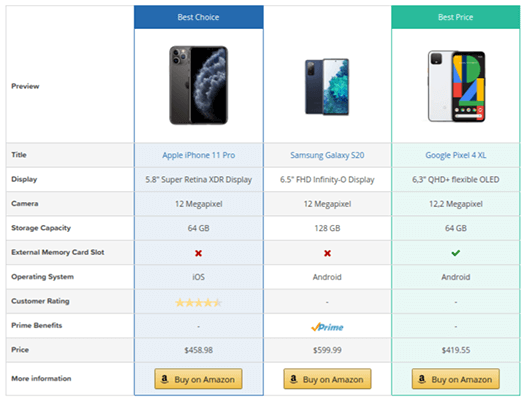
3. Kit
Kit is a creative tool that enables you to create a simple web page filled with all of the products you promote to your audience.
It’s a great way to keep track of your affiliate products while also giving you an efficient way to edit links.
It’s used by prominent creators and entrepreneurs, including Gary Vee, Tim Ferris, MKBHD and Casey Neistat.
4. Jungle Scout
Jungle Scout is an Amazon product research tool.
It lets you see how many sales a particular product has made as well as which keywords you should use to promote it.
It’s a great asset that helps you make informed decisions about the products you choose to promote.
5. WordPress Review Card Plugins
Another great tool for WordPress users. WordPress review card plugins make it easy to enhance product reviews with cards that contain ratings, review summaries and breakdowns of your final score.
A few great options include WP Review Pro, Ultimate Blocks (includes a review block) and Taqyeem.
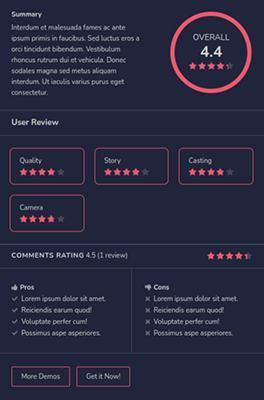
8 best ways to promote Amazon affiliate links
- Resources page
- Product review posts
- Roundup posts
- Tutorial posts
- Emails
- YouTube videos
- Podcast episodes and show notes
- Social media
A Resources page and product review blog posts are two of the most effective ways to promote affiliate links.
A Resources page is a hub your readers can visit to learn about all of the tools and products you use and recommend in your niche. Insert a link to this page in your navigation menu for easy access.
Blog posts work great as well, especially posts that demonstrate the product you want to promote.
Product pages only tell consumers so much about a product.
Promoting it is so much easier when consumers can actually see how it looks and performs in real-world scenarios.
That’s where product reviews and tutorials come into play.
As for how to showcase links, Amazon’s native link tools and AAWP work great.
Regardless, be sure to check out marketing tool Thrive Ultimatum if you want to amp up your promotion strategies.
Disclosing affiliate links
You’re going to need to disclose your relationship with Amazon’s affiliate program on your blog.
There’s a good reason we’ve avoided mentioning this till now – it’s a significant topic in its own right. And requires a dedicated article.
For now, I’d recommend checking out Termly’s guide to Amazon affiliate disclosures.
Final thoughts
Amazon Associates is definitely one of the most popular affiliate programs in the industry, but that doesn’t necessarily mean it’s the best.
It has its advantages and disadvantages.
Amazon’s dominance is one of the more obvious perks to joining the Amazon affiliate program.
The retail giant is a trusted brand, even with the never-ending controversies surrounding them. Plus, your readers likely already shop there, and the marketplace is huge and diverse.
Becoming an Amazon affiliate is also incredibly easy as you seen from the tutorial section of this post.
The program is even lenient on the amount of content you need on your site and the number of referrals you need to earn to remain.
One of the biggest disadvantages of the Amazon affiliate program are its low commission rates.
Amazon slashed its commission rates in April 2020.
Furniture and home improvement products used to pay 8%. Now, they only pay 3%. It’s like this for other categories as well.
Unfortunately, the retail industry as a whole are big offenders when it comes to low commission rates. This is to be expected because margins are far lower for physical products.
SaaS products, on the other hand, offer huge commission rates.
Email marketing service AWeber offers 30-50% recurring commission rates. This means if you refer a customer today, you’ll earn at least a 30% commission of what they pay today plus a 30% commission for every additional month they pay.
Amazon Associates also has one of the worst cookie policies.
Many affiliate programs offer at least a 30-day cookie policy. This means you’ll earn a commission even if your reader doesn’t buy right away. They just need to complete their purchase within that 30-day timeframe.
Amazon’s cookie policy is only 24 hours.
They do have a 90-day cookie policy, but your reader must place the product you promote in their shopping carts in order for this policy to kick in.
Despite these drawbacks, Amazon Associates is still one of the simplest ways for new bloggers to generate revenue.
If you do decide to join, make sure you take advantage of the reporting tools Amazon offers.
They’ll help you see what’s working as you take your blog to the next level.
Disclosure: This post contains affiliate links. This means we may make a small commission if you make a purchase.

